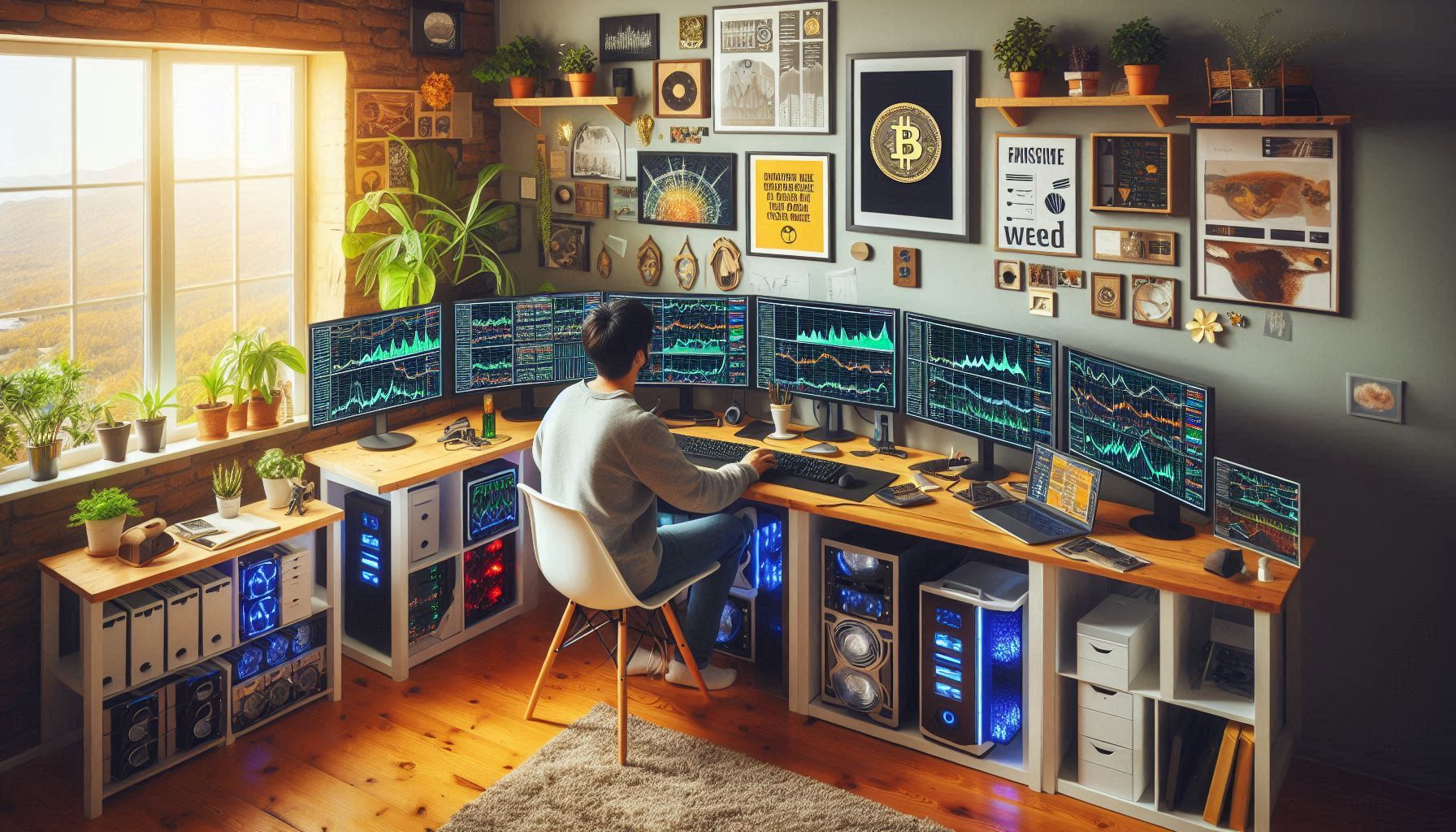Profitable home mining
Home mining—that is, mining cryptocurrencies like Bitcoin or altcoins from your house or apartment—remains a hot topic as crypto matures into a multi-billion-dollar industry. In 2025, the answer is nuanced: profitable home mining is possible under certain conditions, but it’s more challenging than ever and highly dependent on factors like energy prices, hardware, and operational ingenuity.
Key Factors Affecting Home Mining Profitability
1. Electricity Costs for home mining
-
Electricity is your main ongoing expense. In most cases, it makes or breaks profitability. If you pay high utility rates (e.g., above $0.10–$0.15 per kWh), mining crypto at home will almost always be unprofitable.
-
Miners in areas with low-cost electricity (e.g., below $0.05 per kWh) have a real chance to make profits, especially if they use energy-efficient hardware.
-
Solar panels or renewable energy may help reduce costs but require upfront investment and system sizing.

Profitable home mining
2. Hardware Selection
-
Efficiency is paramount. ASIC miners dominate Bitcoin mining but are large, noisy, and consume significant power, often making them impractical for typical residences.
-
For home mining, lower-powered ASICs or GPU rigs mining altcoins are often preferable.
-
Modern GPUs allow mining of profitable altcoins with algorithms resistant to ASICs, giving flexibility to switch coins based on market conditions.
-
Used ASICs or GPUs bought second-hand may reduce investment but could be less efficient or less reliable.
3. Noise and Heat Management at home mining
-
Mining hardware generates noise and heat. Managing this in typical homes/apartments is tough.
-
Noise from ASIC fans may be disruptive without soundproofing or isolation.
-
Excess heat helps in winter heating but is a burden during warmer months.
-
Adequate ventilation or dedicated spaces (e.g., garages or basements) may aid in managing these issues.
4. Mining Pools and Software
-
Joining mining pools is essential to get steady payouts, especially for solo home miners.
-
Mining software must be configured to optimize hashrate and power consumption. Popular software varies by hardware and coin.
-
Regular monitoring is necessary to prevent downtime, hardware issues, or loss of profitability.
5. Market Conditions & Coin Selection for home mining
-
Cryptocurrency prices and mining difficulty constantly fluctuate.
-
Profitable home mining often involves switching between altcoins that are more profitable for your hardware and electricity prices.
-
Using profitability calculators helps identify the best coin to mine at any given time.
-
Staying updated on market trends and difficulty changes is key.
Can You Profitably Mine Bitcoin at Home?
-
Mining Bitcoin at home is usually infeasible for everyone except those with exceptionally cheap electricity and the ability to run large ASICs discreetly.
-
Most residential electric grids and noise constraints limit practical ASIC use.
-
Many home miners turn to GPU mining of altcoins as a more realistic avenue.
Prospects of Altcoin Mining at Home
-
GPU mining allows individual miners to remain competitive, especially on coins designed to resist ASICs.
-
Altcoins with growing ecosystems and reasonable network difficulty may yield modest but consistent returns.
-
Learning to optimize GPU settings, undervolt, and manage rigs can increase efficiency and profits.

Profitable home mining
Risks and Challenges of Home Mining
-
High cooling and electric bills can quickly negate income.
-
Hardware failures and maintenance can be both costly and time-consuming.
-
Mining profitability can swing wildly, and coins can drop sharply in value.
-
Environmental considerations and local regulations (noise, power use) may apply.
-
Mining is no longer “set-and-forget” — continuous attention is needed.
Practical Tips for Mining Successfully at Home
-
Choose efficient hardware with favorable hash rate per watt.
-
Monitor electricity rates and switch mining hours if possible (time-of-use rates).
-
Join reliable, low-fee mining pools.
-
Continuously monitor and tweak mining configurations.
-
Consider reinvesting profits into newer, more efficient equipment.
-
Keep backup plans for selling or repurposing hardware if mining becomes unprofitable.
Profitable home mining in 2025 is possible but challenging. It requires careful balancing of electricity costs, hardware efficiency, coin choice, and operational know-how. While mining Bitcoin at home is mostly inaccessible, profitable GPU mining of select altcoins remains an option for dedicated hobbyists who can manage noise, heat, and electricity bills.
If you are passionate about mining and willing to learn and adapt, home mining can be a rewarding venture—not only financially but also as a learning experience and gateway into the crypto space.

